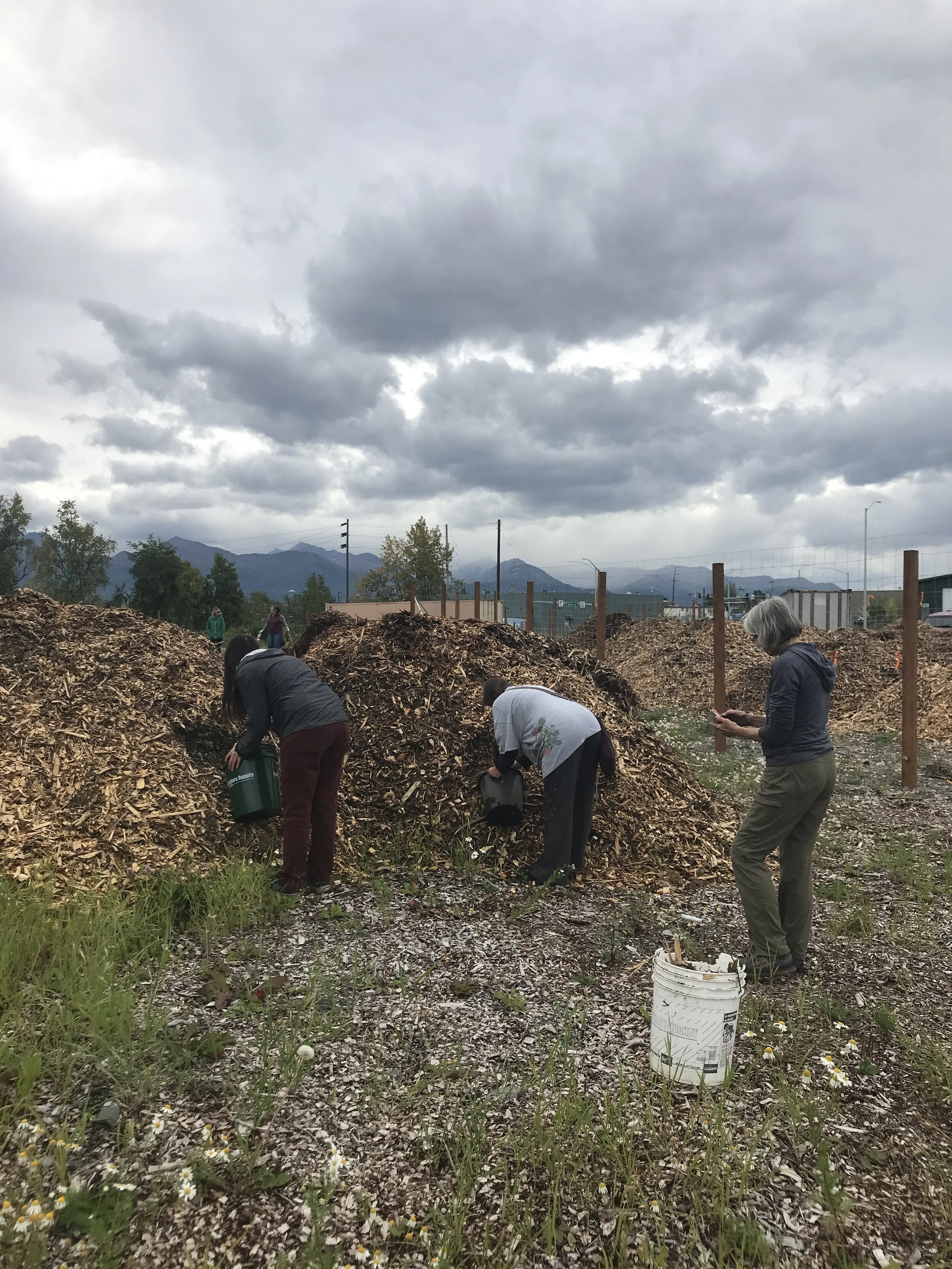Moody, grey clouds moved quickly above the Chugach range as people began to gather at the former site of the Alaska Native Medical Center on Anchorage’s 3rd Ave. It was a mid-September Sunday afternoon, and the occasion was a community service day and fruit tree-planting workshop at the emerging Stickleback Farm, which is literally taking root along the busy urban thoroughfare adjacent to Bean’s Café. The day was blustery, but the mood among the crowd of about 40 people was festive and alive with a can-do attitude.
Ben Tietge, a board member of the AK Pioneer Fruit Growers Association and a horticulturalist who did apple research as an undergrad at the University of Minnesota (he was involved in assessing a variety called SweeTango) explained some basics about fruit tree growth: How each sapling took shape when it was grafted to a cold-hardy rootstock, Malus antonovka”; how to carefully break apart the root ball if it looked at all bound by the pot it came out of; and how to nestle it into the soil so the graft ‘knuckle’ will sit at the base of the growing tree. As the planting started, others with expertise in soil science and permaculture pitched in to coach less experienced volunteers. Kids helped by ferrying buckets of water from a central holding tank.
The planting was special due to the diverse group effort, but also unique because we set the 28 apple and 5 sour cherry trees in soil-packed, recycled fish totes, where they will grow as part of an experiment in establishing a cold-hardy urban orchard. Funded by a grant from the Alaska DNR Division of Forestry, the orchard project is one of the community-based projects AFPC has supported as part of our commitment to strengthening local food systems in Alaska. It’s also part of a larger effort on behalf of the Alaska Food Policy Council, a dedicated neighborhood group - the 3rd Street Radicals, the Municipality of Anchorage, UAA Division of Population Health, UAA Institute for Circumpolar Health Studies, FRESH - the Food Research, Enterprise, and Sustainability Hub, Alaska Seeds of Change, Alaska Native Tribal Health Consortium, and the Anchorage Museum. Part of the collective goal is to revitalize the long-neglected parcel of land and demonstrate how urban food production can beautify, bring community together, and ultimately help make more healthy foods available.
Stickleback Farm, named after a resilient small fish endemic to neighboring Ship Creek, is slated to occupy about 2 acres of the overall 15 acre parcel, as part of a vital urban mixed use development. The site doesn’t look like much of a farm yet, but some foundational pieces are beginning to emerge, including the fish tote orchard, a moose fence, a connection to municipal water, and two Conex containers that house tools and two water tanks.
Also at the site are long rows of wood chips and grass clippings donated and hauled in by local tree and lawn care contractors. These are ingredients to help build healthy soil at the farm, which sits on a gravel-dominated substrate. During the workday, one group of volunteers vigorously filled hundreds of wheelbarrows with the materials, and with coaching from compost expert Rand Hagenstein, had quickly built Stickleback Farm’s first significant compost pile. A week later that pile had heated to an impressive 160 degrees F – well on its way to becoming the foundation for healthy fruit and vegetable production.
Alaska Seeds of Change, with help from a recent Partners for Places grant is poised to help lead further development of the farm, including long term care of the orchard. One of the greatest challenges to urban food production and grassroots neighborhood revitalization is competing land use priorities and the uncertainty associated with time-limited land use permits. Helping establish the fish tote orchard and nascent compost program that September day felt like a significant, tangible, and proactive step toward realizing the community vision of a vital, community-centric growing space in Anchorage’s Ship Creek neighborhood.











